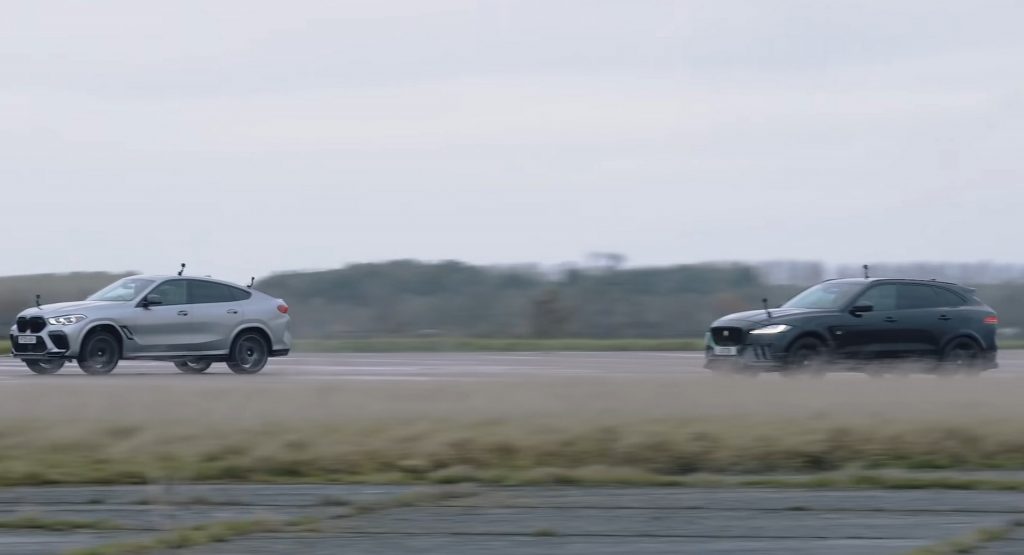There’s a lot of debate about whether a supercharger’s parasitic loss is worse than a turbocharger’s lag. But as is so often the case, context matters enormously.
Take, for example, CarWow’s latest drag race between the BMW X6M and the Lister Stealth, a tuned F-Pace SVR. Although the standing quarter-mile is a dead heat despite the BMW‘s power deficit, the roll race is where the Lister’s supercharger really comes into its own.
In both comfort mode and sport mode, the Jag pulls quicker, taking off with more immediacy and speed. There’s a bit of bloviating going on between host Mat Watson and BMW driver Yanni Charalambous, but the fact remains that the roll race is a good reflection of a real-world scenario.
Also Read: Jaguar C-Type Continuation Series Announced For 2022 As The Brand’s Ultimate Reborn Classic
How often do you really launch hard? If you’re not into street racing, the answer is very rarely; you’re much more likely to use your SUV’s power to overtake a slower moving vehicle on a two-lane highway or the like. So the supercharger’s instant response is genuinely something to consider, even though the Jag was behind the BMW in the standing quarter (mind you, they both finished in 11.7 seconds).
In the Jag’s case, that supercharger is hooked up to a 5.0-liter V8 and thanks to a stage 2 tune (and some pulley wizardry) it makes 666 hp and 650 lb-ft of torque. The BMW, meanwhile, makes use of a 4.4-liter V8 and two turbos that combine for 617 hp and 553 lb-ft of torque in Competition spec.
Although there’s a lot going on in that comparison apart from the turbocharger vs supercharger argument, it’s an interesting insight into the debate.




